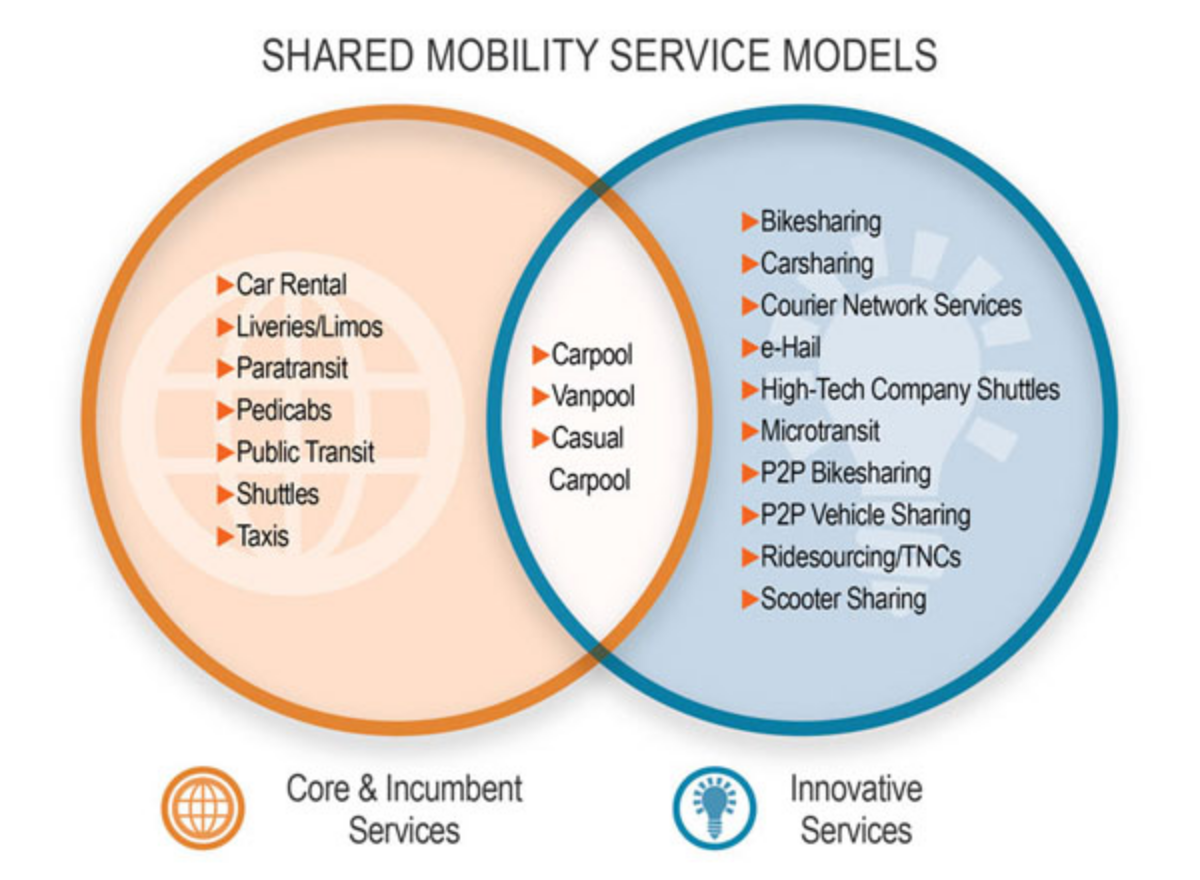Nice Ride MN is the Twin Cities' bike share system. (m01229 / Flickr)
Shared-mobility activists concerned that the federal government has not seriously considered the opportunities and challenges presented by the sharing revolution in transportation can take heart from a primer published by the Federal Highway Administration in April 2016. Two years in the making, Shared Mobility: Current Practices and Guiding Principles provides a comprehensive overview of the shared mobility services currently in operation; their environmental and social impacts; and the ways in which developments in shared mobility can and must impact public policy and transportation policy. The report’s authors, Susan Shaheen (UC Berkeley), Adam Cohen (UC Berkeley), and Ismail Zohdy (Booz Allen Hamilton) combine research results, high-level policy recommendations, and on-the-ground examples to make a persuasive case for the relevance of shared mobility to the United States’ transportation future.
Shared Mobility: Current Practices and Guiding Principles, which was vetted by 23 experts and practitioners in the field, begins with an outline of shared mobility services as grouped into five categories: membership-based self-service models; person-to-person (P2P) self-service models; non-membership self-service models; for-hire service models; and mass transit systems. The authors also identify the key labor, consumer and technological trends that influenced the rise of shared mobility, and summarize research findings on the various modes (bikesharing, carsharing, TNC, etc.). Throughout the report, Shaheen, Cohen, and Zohdy are careful to emphasize the limits of the data on shared mobility and its impact, recommending ongoing tracking and longitudinal analysis to better assess this relatively new phenomenon.

Shared mobility services, old and new. (Shared Mobility)
Of particular import is the primer’s focus on the government’s role in encouraging and regulating shared mobility, including in its capacity to support or extend public transit. Three chapters zero in on the relationship of public agencies to shared transportation services. The first (Chapter 4, “Public agencies and shared mobility”) examines nine areas in which local or regional governments and shared mobility intersect, from taxation to ensuring equity and equal access. The two succeeding chapters summarize lessons learned and offer guiding principles for transit agencies and other public authorities interested in engaging shared transportation services.
Among the primer’s strengths is its inclusion of case studies from across the United States. These brief descriptions of legislation and other policy initiatives ground the report in contemporary transportation planning practice, and suggest the feasibility of effecting many of the recommendations made by its authors. Intended as an early guidepost in a rapidly-evolving field, Shared Mobility: Current Practices and Guiding Principles is a significant contribution to the literature on today’s tech-enabled shared transportation modes.









